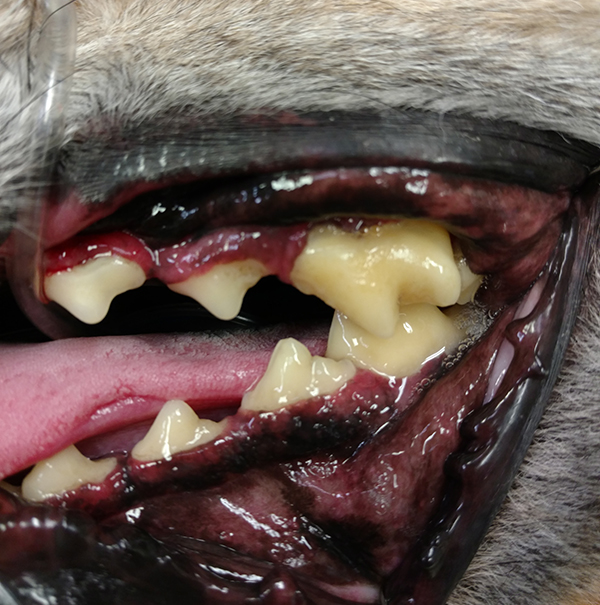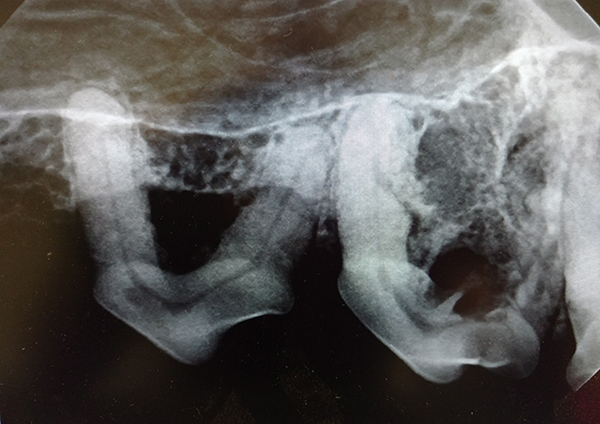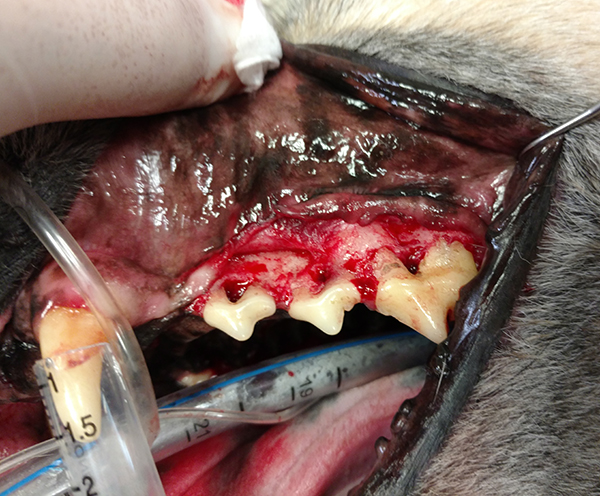Dentistry and Oral Radiographs
Your pet does not have to have bad breath. In fact, bad breath is likely a sign your pet has periodontal disease. Periodontal disease is the most common clinical condition affecting adult pets. It is estimated that as much as 85 percent of pets have dental disease by the time they are three years old. This is an alarming statistic, considering the bacteria causing dental disease can also damage the heart, lungs, kidneys and liver.
What is periodontal disease?
It is PAINFUL. Periodontal disease is caused by bacterial infection that spreads, unnoticed, beneath the gumline. As the disease progresses, it destroys the bone around the tooth roots leading to mobile, painful teeth. Dogs and cats with advanced periodontal disease often require oral surgery to extract many teeth.
How do I know if my pet has periodontal disease?
Unfortunately, by the time there are obvious indications of periodontal disease, such as bad breath and loose teeth, there is already significant damage. Periodontal disease begins and exists under the gumline where it is not visible. White teeth do not mean that your pet is free from disease. The only way to prevent or identify periodontal disease early is through regular veterinary dental cleanings under anesthesia, where the pet’s mouth is thoroughly evaluated, cleaned, and all the teeth are radiographed to identify bone loss, periodontal pockets, and other disease involving tooth root and the surrounding bone.
Bellevue Animal Clinic has the latest in digital oral radiographs and ultrasonic scaling equipment to provide your pet the best in dental care. We practice C.O.R.E which stands for Comprehensive Oral and Radiographic Evaluation. C.O.R.E. helps us to detect the full extent of any periodontal damage. In the event that oral surgery is required, our veterinarians have the latest training and equipment to relieve your pet’s pain and get back to good oral health. Serving the areas of Opelousas, Carencro, Church Point, Port
Barre, and Breaux Bridge, please call today to schedule your pet’s dental care appointment.
What Is C.O.R.E?
Case:

Oftentimes, we look at our pet's mouth and it looks okay.

This is the benefit of dental radiographs.
Radiographs allow us to visualize the disease and bone loss occurring under the gingiva.

Once the gingiva was elevated, notice the significant loss of bone. Bone lysis is a painful process.
How can I prevent periodontal disease?
Periodontal disease is preventable. There are two key components to preventing periodontal disease in your pet
1) Annual dental cleaning under general anesthesia allows us to examine each tooth in addition to obtaining radiographs to evaluate the tooth structure that cannot be seen with the naked eye. When done regularly, your pet’s mouth can be thoroughly cleaned and any bacteria or beginnings of periodontal disease can be addressed before it causes extensive and expensive damage.
2) Home dental care: Imagine what your own mouth might be like if you never brushed your teeth. Your pet’s mouth is no different. Daily brushing is the best prevention but only about 2 to 3% of pet owners are able to brush their pet’s teeth. The best product for home dental care is the one your pet will allow you to use. The Veterinary Oral Health Council has a list of diets, treats, chews, and water additives that can be used to assist with your pet’s preventive oral healthcare program.